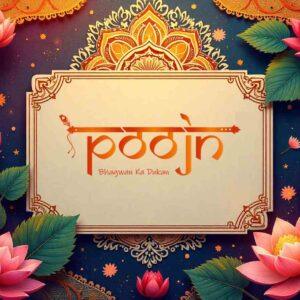
Nyaya, a revered school of Indian philosophy, delves deep into the realms of logic and epistemology. Originating around the 2nd century CE, it holds a significant place in Indian thought. Its emphasis on logical reasoning and the theory of knowledge offers invaluable insights, even in our modern world. This exploration delves into the captivating facets of Nyaya philosophy and its contributions to our understanding of knowledge. Deepen your understanding of Hindu philosophy with our resources on Hindu Philosophy Explained: A Beginner’s Guide.
What is a Nyaya Syllogism?
A Nyaya syllogism provides a structured framework for presenting logical arguments. It comprises five key components:
- Proposition (Pratijna): This is the statement that needs to be proven. It sets the foundation for the entire argument.
- Reason (Hetu): This is the evidence or justification supporting the proposition. It explains why the proposition is believed to be true.
- Example (Udaharana): A specific instance demonstrating the reason in action. It clarifies the relationship between the reason and the proposition by showing how they work together.
- Application (Upanaya): This step connects the example back to the proposition, showing how the general principle applies to the specific case. It bridges the gap between the example and the claim being made.
- Conclusion (Nigamana): This is the final assertion, confirming the truth of the proposition based on the preceding steps. It summarizes the argument and reiterates the proven statement.
Each component builds upon the previous one, creating a cohesive and persuasive argument. Inference (anumana) plays a crucial role in Nyaya syllogisms, validating knowledge claims. For instance, observing smoke rising from a hill (reason) leads to the inference of a fire (conclusion) based on prior observations (example).
Grasping the structure of a Nyaya syllogism helps appreciate its significance in constructing robust arguments and validating knowledge. Explore our range of Bhagavad Gita and other scriptures for a deeper dive into philosophical concepts. Let’s delve deeper into Nyaya’s theory of knowledge.
Nyaya’s Theory of Knowledge
Nyaya, a prominent school of Indian philosophy, is a rich source of logical analysis and epistemology. It serves as a compass, guiding us towards right knowledge and aiming to alleviate human suffering stemming from ignorance of reality. This resonates with the broader concepts of Dharma and Karma, which you can explore further on our blog post about Dharma and Karma in Hinduism.
Valid Means of Knowledge (Pramanas)
Nyaya centers around epistemology (pramanas), emphasizing the sources of knowledge. It posits that a precise understanding of the world is key to happiness. Let’s explore its key aspects:
- Perception (Pratyaksha): This refers to the direct and immediate knowledge gained through our senses—sight, hearing, touch, taste, and smell. It involves the interaction of the self, mind, senses, and the objects of perception. Nyaya distinguishes between ordinary perception (direct sensory experience) and extraordinary perception (intuition). Only ordinary perception is considered a valid source of knowledge.
- Inference (Anumana): This involves acquiring indirect knowledge through logical reasoning based on observed signs or causes. It is the process of drawing conclusions from established facts to arrive at new knowledge. The process of inference consists of three components: the linga (sign or cause), the sadhya (effect), and the siddhanta (established conclusion).
- Comparison (Upamana): This involves gaining knowledge through analogy and similarity. It is a way of understanding something new by comparing it to something already known.
- Testimony (Shabda): This refers to knowledge acquired from reliable sources, such as experts or scriptures. It emphasizes the importance of trusting credible sources for acquiring valid knowledge. You can find a variety of sacred texts and puja items on Poojn.in.
Invalid Knowledge
Nyaya identifies forms of invalid knowledge, including memory, doubt, error, and hypothetical arguments. Recognizing these helps in avoiding misconceptions. Enhance your puja experience with authentic products from Poojn.in.
Nature of Knowledge
Nyaya views knowledge as a manifestation of objects. It categorizes knowledge into two types:
- Subjective Knowledge: This type of knowledge varies from person to person based on individual experiences and perspectives.
- Objective Knowledge: This knowledge remains consistent across individuals, independent of personal biases or interpretations.
Valid vs. Invalid Knowledge
- Valid Knowledge (Prama): This represents a true and accurate grasp of an object as it truly is. It aligns with reality and provides a sound basis for understanding.
- Invalid Knowledge (Aprama): This refers to a distorted or inaccurate representation of reality. It leads to misconceptions and hinders a true understanding of the world.
Realism in Nyaya
Nyaya philosophy embraces realism, asserting the independent existence of the world regardless of our perceptions. This stance is supported by logical arguments and reflective experience. Discover a wide selection of puja essentials and spiritual items on Poojn.in, helping you connect with your faith and traditions.
In essence, Nyaya epistemology offers a structured framework for understanding how we acquire knowledge. It underscores the importance of valid reasoning, dependable sources, and direct perception for gaining an accurate understanding of reality. This ancient wisdom remains profoundly relevant today, guiding us towards clearer thinking and informed decisions.


